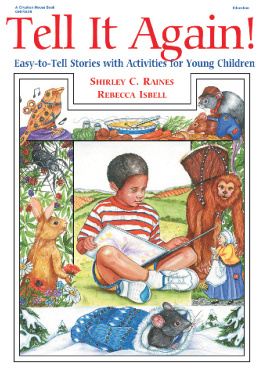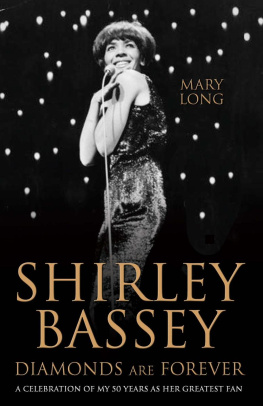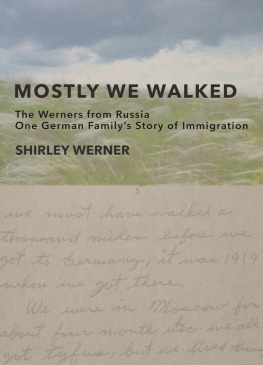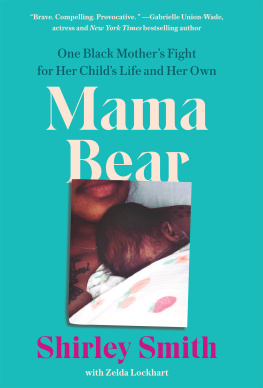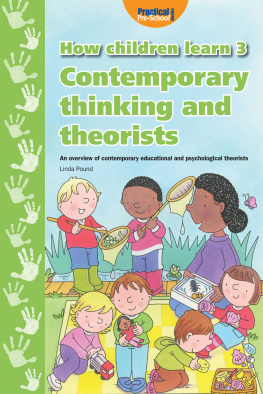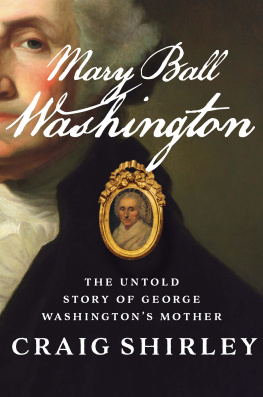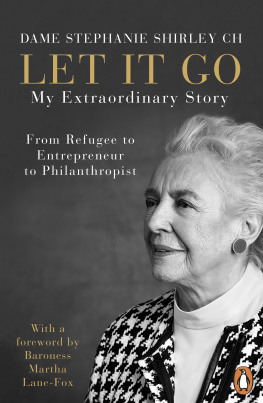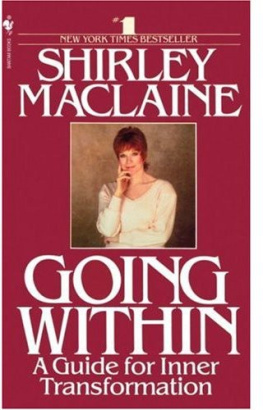Gone Shopping: The Story of Shirley Pitts Queen of Thieves
Lorraine Gamman

Contents
This book is dedicated to all Shirleys children, particularly Christopher (and Jane) Hawkins whose lasting friendship made the difference; also to Joanne, George, Chris, Roseanne, Patsy, Harry and Shirley Jnr. To all those grandchildren who were close to Shirley, and/or the great grandchildren she didnt get to meet. To Shirleys fans who have turned the 1996 edition of the book into a cult classic or at least a collectors item on eBay. To everyone who knew and loved the Queen of Thieves, particularly to Shirleys former community in old Hoxton as well as to her extended family and friends. This one is for you.
Shirley died in 1992 and the first edition of the book came out in 1996. A lot of people helped make Gone Shopping happen. First I should acknowledge the historian and novelist Gilda ONeill who wrote My East End (2000) and who died prematurely in October 2010. I never did get to tell her my news that finally Gone Shopping might be made into a TV series. Gilda was there at all the nightmare moments after Shirley died when some of her children lost their grasp on reality. Gilda helped make sure I didnt give up, as did my old friend the columnist Suzanne Moore. Both encouraged me to publish and be damned if need be, as did my own family, particularly, my sister Lynne Gamman, who is simply a force of nature.
The eminent historian Raphael Samuel who founded the oral history workshop movement and who mentored me deserves recognition too for his place in oral history and this story. Raphael died in 1997, well before his time, only months after first publication of Gone Shopping. His book The East End Underworld, the Life and Times of Arthur Harding (1981) originally gave me the inspiration to write Shirleys story. He also persuaded me to deliver a PhD on shoplifting that he co-supervised, but never saw completed. Raphael, bless him, tried to tell those nice middle class editors and publicity people at Penguin (during my original book launch at Murder One, Charing Cross Road) that this book was more than a true crime story, but also a cultural history of East London. I am not sure he was heard, or the extended audience for Shirleys London and East End memories was appreciated. I am therefore very pleased to see Bloomsbury reissue the book and extend my thanks to them and in particular to my agent Michael Foster at PFD/The Rights House. By the way, this edition includes a new 2012 afterword as a free take it or leave it extended critical essay at the end of the book. It contextualises why Gone Shopping is more than just a lively a page turner of a true crime story, but also an original contribution to knowledge. Many thanks to Central Saint Martins College of Arts and Design, part of the University of Arts London, for giving me the space to think about such matters: also to my team at the Design Against Crime Research Centre especially Adam Thorpe, Dani Davies, Chloe Griffith, Marcus Willcocks, Matthew Malpass, Paul Ekblom and freelance and intern staff for giving me the support to keep it real; also Itamar Ferrer, who delivered the cover, and Aaron Daniels for sorting cracked pictures.
Finally, this book is dedicated to my mum Georgina Joyce Gamman now almost 86. Joycie gave me courage and a few gritty stories of her own about Shirley and the many other oysters she knew, some of which informed this book. One day I will turn my mums experiences and stories into pearls of wisdom for my first novel if I can just find the time to finish what I started.
Lorraine Gamman, Spring 2012
Preface
Exit the Queen of Thieves
On 25 March 1992 twenty-one Daimlers in regal procession followed Shirley Pitts (also known as Hawkins, amongst other aliases) to a South London cemetery. The woman the newspapers called the Queen of Shoplifters was finally laid to rest, in a 5,000 Zandra Rhodes dress she didnt buy over the counter.

Funeral of Shirley Pitts, March 1992 ( L. Gamman)
Shirley Pitts final request was that she should be buried as near as possible to her bank robber brother, Henry Adgie Pitts, who had died twenty years earlier in a car crash at the age of twenty-nine. Shirleys children made sure her final wish was granted and the music of Irving Berlins Cheek to Cheek (with the lyric Im in Heaven) serenaded a woman loved by many as she was lowered into the ground. Family and friends did their best to say goodbye privately, but it wasnt easy. Photographers and reporters trampled on church and mausoleum roofs to get a better look and turned the funeral into an absolute farce in their attempts to locate criminal aristocracy.
Shirley Pitts journey had been a long one, far longer than the twenty miles between her home in Chigwell and her final stop at Tooting cemetery. Necessity appears to have been her early criminal inspiration. Shirley was seven when she first went out thieving, stealing bread and milk from doorsteps because her family were hungry. One reporter later commented on Shirleys origins that her early life was as much Dickens as Dickens and Jones. Yet not all Shirleys crimes stemmed from material deprivation or Dickensian conditions. Like her brothers and her father Harry Pitts, who died in prison in 1962, Shirley grew up within criminal subculture in London and soon came to see crime as a normal way of life.
As well as shoplifting, an activity she regarded as her bread and butter trade, Shirley went on to earn her living from fraud, bank robbery, the escort business, jewellery theft, burglary and numerous other scams. In between wearing expensive designer clothes (she developed a penchant for Chanel suits) and having a good time night clubbing, Shirley also found time to give birth to seven children by three different fathers, to be as decent as she could to those close to her and to move home so many times that it wasnt always easy for her partners, let alone anyone else, to know exactly where to find her.
One of the things that most surprised me when putting together Shirleys life story was not only the extent of her criminal career, but also the fact that much of the early crime material in this book sounds like it belongs to a different century. London fifty years ago was a very different place to the city we know and love today, and the mature Shirley was a very different person from the little girl who grew up to be a professional thief.
Shirley Pitts survived so many social changes, including those that influenced the way sixties criminal subculture of theft and bank robbery in London evolved in the eighties to embrace a new (and perhaps even more cynical) world of drug-related crime. Yet Shirley seemed rather untouched by it all. She had simply done every crime going, and, to use a clich, knew what it was all about. From shoplifting to bank robbery, from confidence scams to running an escort business, Shirley really was a professional. Yet she didnt seem cynical about crime at all, despite making her living from it. In many ways I think Shirley viewed crime as a means to living the good life. Crime was a game to Shirley, a way of providing the money needed so that she and her family could live in style until Shirley pulled off the big one (or at least won the pools). Meanwhile, Shirley never seemed to lose hope that she would achieve her dream. Even when she was dying she still found the energy to pull one last scam she just couldnt give up the idea of a better tomorrow.




